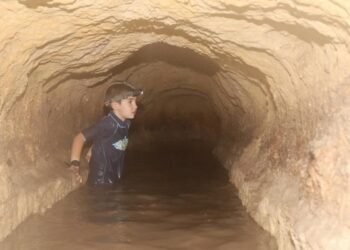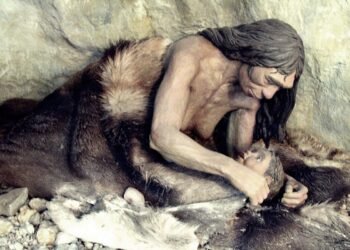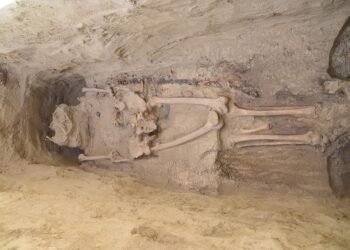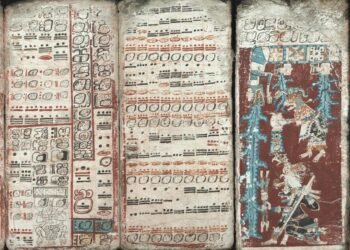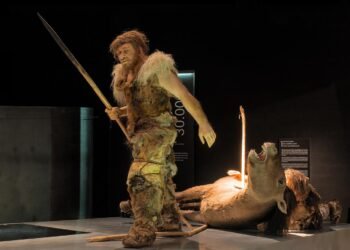In the heart of Mexico City’s historic center, archaeologists from Mexico’s National Institute of Anthropology and History (INAH) have uncovered a burial site containing the remains of four Aztec children, believed to have been laid to rest approximately 500 years ago.
The children’s skeletons were found within what appears to be a traditional four-room Aztec dwelling, dating from between 1521 and 1620, during the early colonial era following the Spanish conquest.
Alongside the human remains, researchers discovered a collection of well-preserved pre-Hispanic artifacts, including clay vases, ceramic pots, and a carved stone figure of a woman holding a child—objects that offer further insight into the daily and spiritual lives of the Aztecs.

According to archaeologists, the style of burial suggests that the children died of natural causes and were interred according to traditional pre-Hispanic funerary customs. This stands in contrast to the Aztec civilization’s more widely known practice of ritual human sacrifice, indicating the diversity and nuance in their cultural traditions.
Juan Carlos Campos, the lead archaeologist on the excavation, noted that after the Spanish conquistadors captured Tenochtitlan—capital of the Aztec Empire and the city that would become Mexico City—the native population faced increasingly difficult living conditions and were largely unable to leave the area. Despite the Spanish efforts to suppress indigenous beliefs and practices, many Aztec traditions continued to survive in various forms.
This latest discovery enriches our understanding of Aztec culture and highlights the resilience of indigenous customs during a time of profound disruption and transformation brought on by colonization. It underscores how, even amid efforts to dismantle their spiritual and cultural systems, Aztec people continued to uphold key aspects of their identity.
The site is part of a broader pattern of recent archaeological discoveries that are shedding light on life in pre- and post-conquest Mexico City. In December, for example, the remains of a richly decorated Aztec altar were uncovered near Garibaldi Plaza, a modern-day cultural hub known for its mariachi music and festivities.
The Aztecs once ruled a vast and sophisticated empire that stretched from the Gulf of Mexico to the Pacific Ocean, encompassing much of what is now central Mexico. However, in 1521, the Spanish conquistador Hernán Cortés led the campaign that ultimately toppled the empire with the fall of Tenochtitlan.
Following the conquest, Spanish authorities forcibly relocated the indigenous population to the outskirts of the growing colonial capital, reserving the city center exclusively for Spaniards. They also implemented strict bans on most pre-Hispanic religious ceremonies and cultural expressions, aiming to replace them with European Catholic norms.
In a symbolic gesture of acknowledgment, Pope Francis offered an apology to Mexican bishops last year on behalf of the Catholic Church, recognizing the historical injustices and painful errors committed during the colonial period.
The burial site of the four Aztec children serves as a powerful reminder of Mexico’s layered and often painful history. It brings renewed attention to the lives and stories of indigenous people during one of the most pivotal eras in the nation’s past—an era marked by both cultural upheaval and the enduring strength of native identity.



